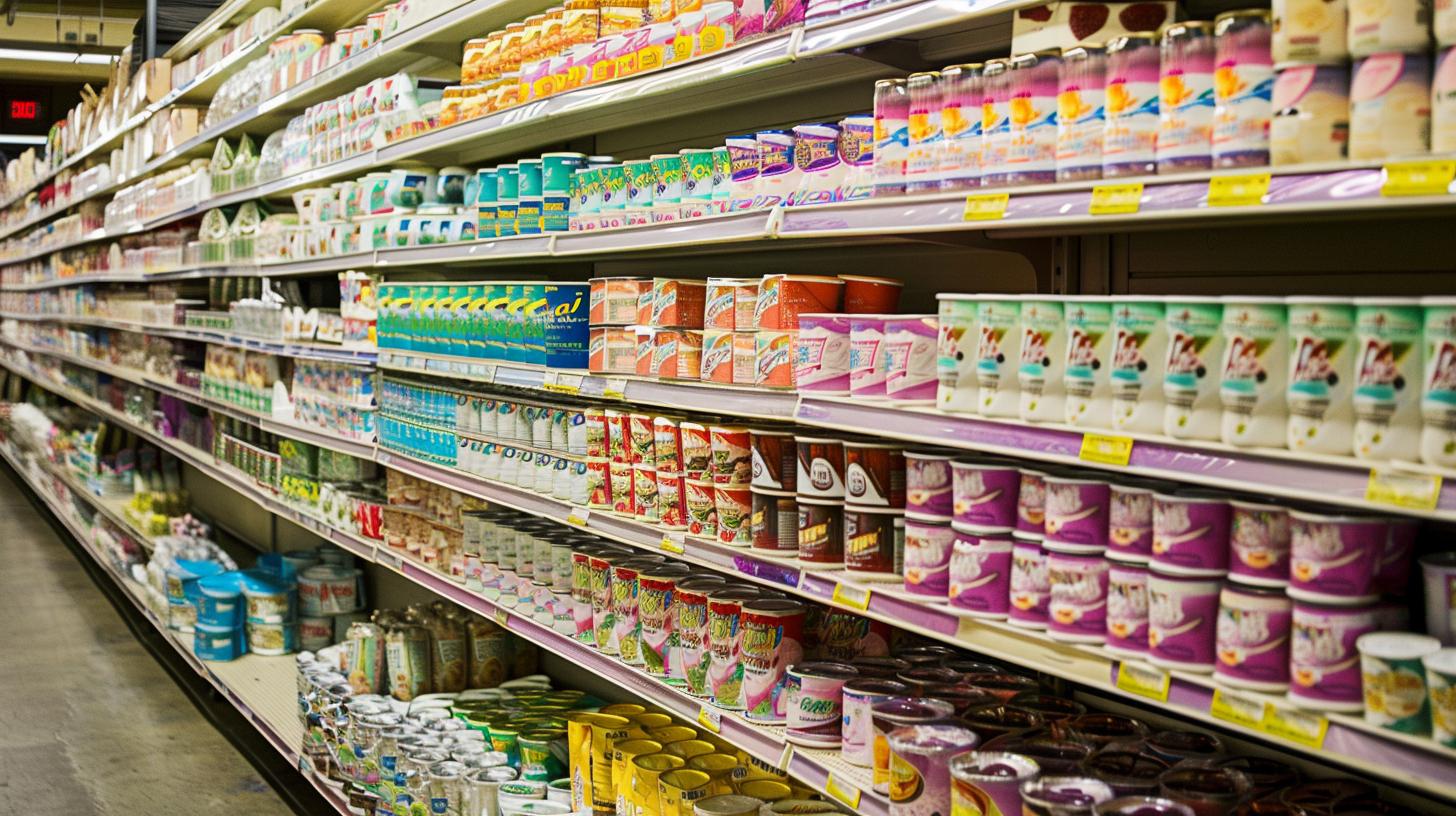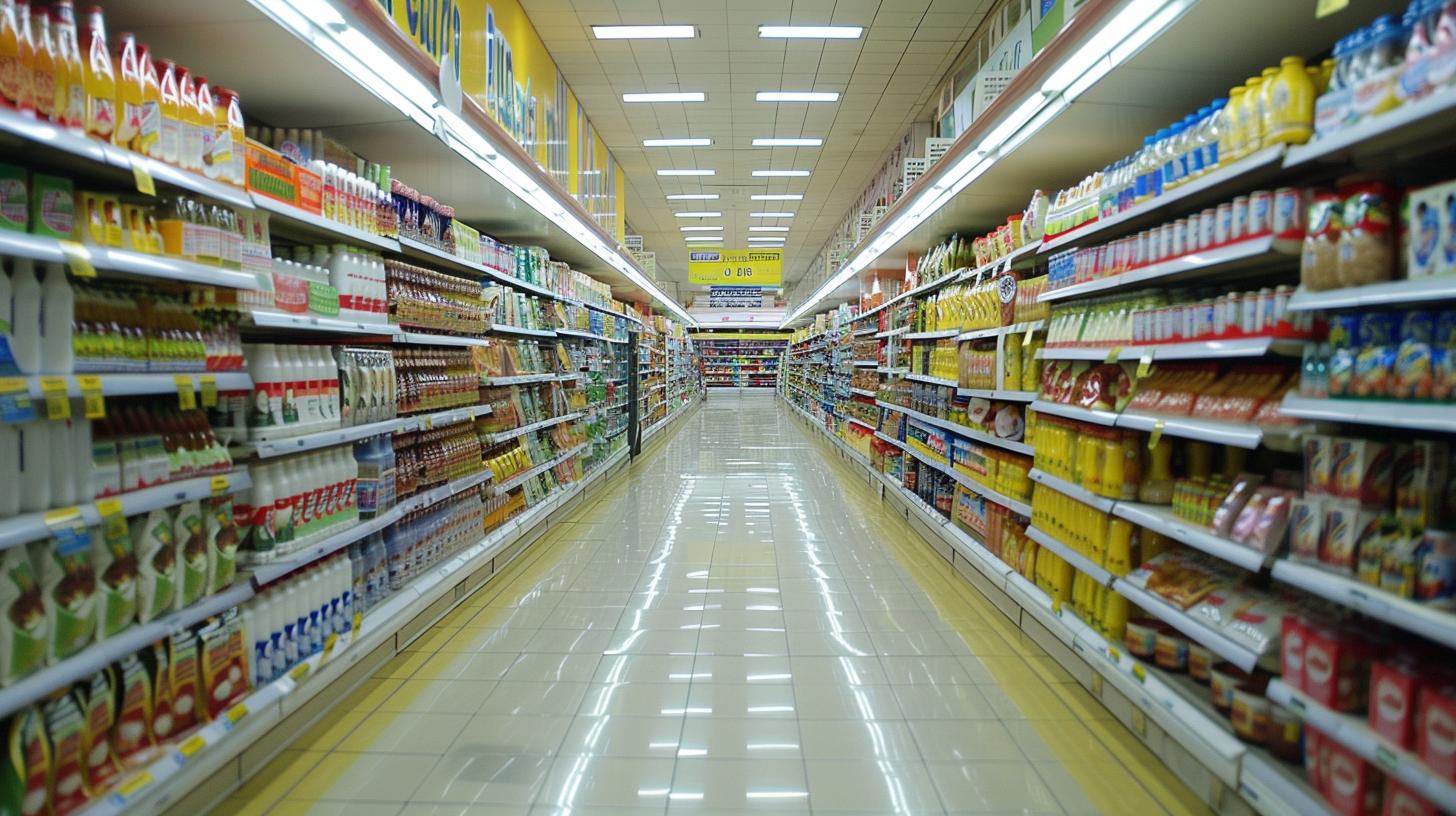The true cost of food reading answers highlights the often overlooked consequences of our food choices. From environmental impact to health costs and social inequality, the price of food goes beyond what we pay at the grocery store. This article will delve into the various hidden costs associated with food, shedding light on the true impact of our dietary decisions.
Food production has a significant environmental footprint, from land use and water consumption to greenhouse gas emissions. The first section will explore how our food choices contribute to environmental degradation and climate change, ultimately affecting the planet’s health.
In addition to the environmental impact, unhealthy food choices also come with their own set of health costs. It is crucial to understand how diet-related diseases can take a toll on individuals and healthcare systems, as well as how access to nutritious food varies across different socioeconomic groups.
Furthermore, this article will discuss how food inequality perpetuates social and economic disparities within communities. Addressing issues such as food deserts and lack of access to affordable healthy options is essential in understanding the broader implications of food inequality.
Moreover, considering the true cost also involves reflecting on the impact of cheap fast food on both individual well-being and societal welfare. Despite being economically convenient, fast food carries a heavy toll in terms of public health and society at large.
Lastly, exploring the hidden costs also encompasses delving into the substantial amount of food waste that occurs along the supply chain. Understanding both its economic and environmental impacts sheds light on its far-reaching consequences for society.
The Environmental Impact of Food Production
Furthermore, unsustainable farming practices can lead to soil degradation and erosion, which not only affects the quality of the soil but also contributes to water pollution. Excessive use of pesticides and fertilizers can contaminate water sources, harming aquatic ecosystems and impacting human health. In addition, water scarcity is becoming an increasingly pressing issue, exacerbated by inefficient agricultural water usage.
Agricultural expansion also poses a threat to biodiversity as natural habitats are cleared to make way for farmland. This loss of biodiversity has far-reaching consequences for ecosystems and can lead to negative impacts on crop pollination and pest control, further affecting food production.
In order to address these environmental challenges, there is a growing movement towards sustainable farming practices such as agroecology and regenerative agriculture. These methods aim to minimize negative environmental impacts while promoting biodiversity, soil health, and efficient use of resources.
| Environmental Impact Factors | Statistics |
|---|---|
| Greenhouse Gas Emissions | 18% of total emissions globally (FAO) |
| Water Pollution | Caused by excessive pesticide and fertilizer use |
| Biodiversity Loss | Resulting from habitat destruction for farmland expansion |
The Health Costs of Unhealthy Food Choices
Unhealthy food choices may seem like an easy and convenient option in the moment, but the long-term health costs can be significant. From obesity and diabetes to heart disease and malnutrition, the impact of poor food choices on public health is a growing concern. Here are some key health costs associated with unhealthy food choices:
Consequences of Unhealthy Eating Habits:
- Obesity: Consuming high-fat, high-sugar, and processed foods can lead to weight gain and ultimately obesity. The health risks associated with obesity, such as heart disease, stroke, and type 2 diabetes, are well-documented.
- Malnutrition: Paradoxically, even in environments of plenty, poor food choices can lead to malnutrition due to a lack of essential nutrients in certain types of highly processed foods.
- Heart Disease: Diets high in saturated fats and cholesterol can increase the risk of developing heart disease by raising levels of “bad” LDL cholesterol.
The Role of Processed Foods:
Processed foods are often high in added sugars, salt, and unhealthy fats. These products contribute significantly to poor dietary habits and have been linked to numerous health issues including obesity, hypertension, heart disease, and even cancer.
Social Determinants of Health:
It’s important to recognize that individuals’ access to healthy food options is often limited by social determinants such as income level and geographic location. This means that those living in lower-income communities or “food deserts” may have less access to fresh produce and other nutritious options, making it more likely for them to rely on fast food restaurants or convenience stores for meals.
Public Health Initiatives:
To address the health costs of unhealthy food choices at a macro level public health initiatives focusing on nutrition education programs in schools communities promoting healthier eating habits have been implemented across many regions aiming from educating people about healthy eating habits. But these initiatives need proper funding for successful implementation.

By understanding the true health costs associated with unhealthy food choices individuals can make more informed decisions about their diets ensuring they understand the true cost of what they consume.
The Social and Economic Impacts of Food Inequality
Food inequality has become a significant issue in society, with far-reaching social and economic impacts that are often overlooked. This section will explore the consequences of food inequality, including its effects on individuals and communities, as well as the broader economic implications.
Health Disparities
One of the most immediate effects of food inequality is the disparity in health outcomes between different socio-economic groups. Access to nutritious and wholesome food is often limited for those living in low-income areas, leading to higher rates of obesity, diabetes, and other diet-related illnesses. This not only places a significant burden on public health systems but also perpetuates cycles of poverty as individuals struggle with chronic health issues that limit their ability to work and thrive.
Impact on Children
Food inequality also has a profound impact on children, affecting their physical development as well as their academic performance. Studies have shown that children who experience food insecurity are more likely to suffer from developmental delays and have lower academic achievement. These early setbacks can have long-term consequences for their future employment opportunities and overall economic success.
Community Well-Being
In addition to individual hardships, food inequality can erode the fabric of communities. As neighborhoods lack access to fresh and affordable produce, local businesses suffer, and overall community vitality declines. Ultimately, this can lead to increased crime rates and decreased property values, exacerbating social and economic challenges for residents.
Economic Costs
From an economic standpoint, food inequality results in substantial costs for society at large. The burden placed on healthcare systems due to diet-related illnesses is immense, while lost productivity from individuals affected by poor nutrition contributes to decreased economic output. Additionally, addressing the social ramifications of food inequality requires significant investment in social services and community development programs.
Overall, the impacts of food inequality extend far beyond mere access to groceries; they permeate every level of society with tangible consequences for individual well-being and broader economic stability. Recognizing these societal costs is crucial in addressing the true cost of food reading answers.
The True Cost of Cheap Fast Food
Fast food may be convenient and inexpensive, but the true cost of cheap fast food extends far beyond its affordable price tag. While it may seem like a cost-effective option in the short term, consuming cheap fast food can lead to significant long-term health, environmental, and social consequences.
One of the most apparent costs of cheap fast food is its impact on public health. High in calories, saturated fats, and sodium, these meals contribute to obesity, heart disease, and other chronic health conditions. According to the Centers for Disease Control and Prevention (CDC), more than 36% of adults in the United States are obese, with fast food consumption being a significant contributing factor.
In addition to personal health costs, there are also broader societal impacts associated with cheap fast food. The high demand for inexpensive meat products has led to factory farming practices that prioritize quantity over quality and animal welfare. These operations have been linked to environmental degradation, increased greenhouse gas emissions, and ethical concerns regarding animal treatment.
Furthermore, consumers often overlook the economic costs of cheap fast food. While the initial price may be low, individuals may ultimately incur higher medical expenses as a result of poor dietary habits. Additionally, communities with high concentrations of fast food establishments often experience negative social implications such as reduced property values and lower income levels.
It is clear that despite its initial appeal as a quick and affordable meal option, cheap fast food comes with a host of hidden costs that extend well beyond the drive-thru window. Understanding these true costs is essential in making informed decisions about food choices and advocating for more sustainable and ethical alternatives.

Exploring the True Cost of Food Waste
Food waste is a major issue with significant economic, social, and environmental costs. When food is wasted, all the resources that went into producing, transporting, and distributing it are also wasted. In this section, we will explore the true cost of food waste and its impact on our society.
The true cost of food waste goes beyond just the price tag on the uneaten food. It includes the cost of labor, water, energy, and land that was used to grow the produce and raise the animals that end up in the trash. In addition to these production costs, there are also environmental costs associated with food waste. When organic matter ends up in landfills, it contributes to greenhouse gas emissions as it decomposes without access to oxygen.
To further understand the impact of food waste on our economy and society, consider these key points:
- Food waste is estimated to cost the global economy $1 trillion annually.
- Approximately one-third of all food produced for human consumption is lost or wasted.
- Food waste exacerbates issues of hunger and food insecurity, as perfectly edible food ends up being discarded while millions go hungry.
In order to address the true cost of food waste, individuals and organizations can take action by implementing strategies to reduce wastage at all stages of the supply chain. For instance:
- Use leftover ingredients in creative ways to minimize kitchen waste.
- Support initiatives that redistribute surplus food to those in need.
- Educate consumers about proper storage and meal planning techniques to reduce household food waste.
By acknowledging and addressing the true cost of food waste through collective efforts at every level of society, we can work towards a more sustainable and equitable future for all.
The Ethical Consequences of Factory Farming
Factory farming, also known as industrial agriculture, has become the dominant form of food production worldwide. This method of mass-producing animals for food has raised significant ethical concerns regarding the treatment of animals, environmental impact, and public health. The true cost of factory farming extends far beyond the price tag on a carton of eggs or a package of meat at the grocery store.
Animal Welfare and Treatment
One of the most pressing ethical concerns surrounding factory farming is the treatment of animals. In these large-scale operations, animals are often confined to overcrowded and unsanitary conditions, given hormones and antibiotics to promote rapid growth, and subjected to inhumane practices such as debeaking or tail docking without anesthesia. This constant suffering raises serious questions about the moral implications of how we produce our food.
Environmental Degradation
The environmental impact of factory farming cannot be overstated. Large-scale animal agriculture contributes significantly to greenhouse gas emissions, water pollution from waste runoff, deforestation for feed crops, and depletion of natural resources like water and fossil fuels. It poses a direct threat to biodiversity and disrupts natural ecosystems, further exacerbating the already critical state of our planet.
Public Health Risks
The overuse of antibiotics in factory farming has led to the development of antibiotic-resistant bacteria that can pose a severe risk to human health. Additionally, crowded living conditions for animals create a breeding ground for diseases that can transfer from animals to humans (zoonotic diseases). These health risks highlight the interconnectedness between how we treat animals and our own well-being.
The Hidden Costs of Food Transportation and Distribution
The transportation and distribution of food products are essential elements of the modern food system. However, the true cost of this process is often overlooked or underestimated. From the environmental impact of long-distance transportation to the social and economic implications of food distribution, there are several hidden costs associated with getting food from farms to our plates.
One significant hidden cost of food transportation is its environmental impact. The long-distance shipping of food products contributes to carbon emissions and pollution, as well as increased energy consumption. This can have detrimental effects on the environment, including contributing to climate change and air pollution. Additionally, the use of packaging materials for transporting and preserving food also adds to the environmental burden, contributing to waste and resource depletion.
Furthermore, the reliance on long-distance transportation for certain types of food has social and economic implications. For example, many communities rely on imported goods due to limited local agricultural production. This dependency can lead to issues such as food insecurity, as well as economic vulnerability in these areas. In addition, the concentration of production in specific regions can create disparities in access to fresh and nutritious foods, particularly in urban areas where transportation may be limited.

Moreover, the transportation and distribution process also incurs financial costs that are often passed on to consumers. As food travels long distances from farms or processing facilities to retail locations, it accumulates additional expenses related to storage, refrigeration, and handling. These costs ultimately contribute to higher prices at the point of sale, impacting consumer purchasing power and affordability.
In light of these hidden costs associated with food transportation and distribution, it is imperative for stakeholders within the food system – including producers, retailers, policymakers, and consumers – to consider strategies for mitigating these impacts. This might involve reevaluating supply chains to prioritize local sourcing and reducing reliance on long-distance shipping where feasible.
Additionally, investments in sustainable transportation methods and infrastructure could help minimize environmental harm while maintaining efficient distribution networks. By understanding and addressing these hidden costs, we can work towards a more sustainable and equitable food system for all.
The True Cost of Food on a Global Scale
The true cost of food extends far beyond the price tag at the grocery store, with significant implications on a global scale. From environmental degradation to economic disparities, the impact of food production and consumption can be felt across the world. Understanding these costs is crucial in addressing the challenges faced by communities worldwide.
One of the most pressing global concerns related to food production is its environmental impact. The use of chemical fertilizers and pesticides, as well as deforestation for agricultural purposes, contribute to climate change and biodiversity loss. Additionally, water scarcity and pollution from agricultural runoff further exacerbate these issues, affecting not only local ecosystems but also contributing to global environmental challenges.
Furthermore, the health costs associated with poor-quality diets affect individuals not only in developed countries but also in developing nations. As highly processed foods become increasingly available worldwide, rates of diet-related diseases such as obesity and diabetes are on the rise. The burden placed on healthcare systems due to these illnesses has far-reaching implications for economies and societies, particularly in regions with limited access to medical resources.
Food inequality also has profound social and economic impacts globally. As some regions struggle with malnutrition and food insecurity, others face an overabundance of food that leads to excessive consumption and waste. The unequal distribution of resources and access to nutritious food perpetuates cycles of poverty and hinders opportunities for sustainable development.
Moreover, globalization has led to the widespread availability of cheap fast food options that have negative consequences for public health and local food systems. The proliferation of multinational fast-food chains has homogenized diets and disrupted traditional culinary practices, contributing to a loss of cultural diversity in food consumption patterns.
Lastly, addressing the true cost of food waste is essential on a global scale. Each year, billions of pounds of edible food are discarded while millions suffer from hunger around the world. Food waste also contributes to greenhouse gas emissions when it decomposes in landfills, further exacerbating environmental challenges.
Conclusion
In conclusion, the true cost of food extends far beyond the price tag at the grocery store. It encompasses the environmental impact of food production, the health costs of unhealthy food choices, the social and economic impacts of food inequality, and the ethical consequences of factory farming. Additionally, the hidden costs of food transportation and distribution, as well as the global scale effects of food production, all contribute to the true cost of food.
It is crucial for individuals, communities, and governments to take action to address these true costs. This may include supporting sustainable and ethical farming practices, promoting access to healthy and affordable food options for all members of society, minimizing food waste, and advocating for policies that mitigate the negative impacts of large-scale food production. By taking proactive steps to address these issues, we can work towards a more sustainable and equitable food system.
Furthermore, consumers can also play a significant role in addressing the true cost of food by making conscious purchasing decisions. Supporting local farmers markets, choosing organic or sustainably sourced products, reducing meat consumption and opting for more plant-based meals are all ways that individuals can contribute to mitigating the true cost of food.
Ultimately, it is important to recognize that understanding and addressing the true cost of food is a complex and multifaceted issue. However, by collectively working towards greater awareness and accountability in our food systems, we have an opportunity to create positive change for our health, our environment, and our global community. Taking action now is essential in ensuring a more sustainable future for generations to come.

